Withlacoochee River System Update - 9/1/2022
Southwest Florida Water Management District sent this bulletin at 09/01/2022 04:37 PM EDTWet Weather Finally Arrives
Rainfall:
- Although Florida’s wet season officially began in June, most of this summer we’ve seen below average rainfall.
- That changed this past week, as thunderstorm activity increased dramatically throughout our region.
- Overall, we received about 8.3 inches of rain last month, with most of that rain coming in the past 7 days.
- So far this summer (June – August) we’ve had about 20 inches of rain, below average for that period and much lower than last summer (32 inches) during those same months.
- A drier rainy season this year has kept water levels lower than normal, but substantial rainfall may still change that.
- Region-wide aquifer levels are currently in the 66th percentile, much lower than they were a year ago (85th percentile) due to less rainfall this summer.
- The map below shows rainfall totals for the month of August (the historical average is 8.1 inches).
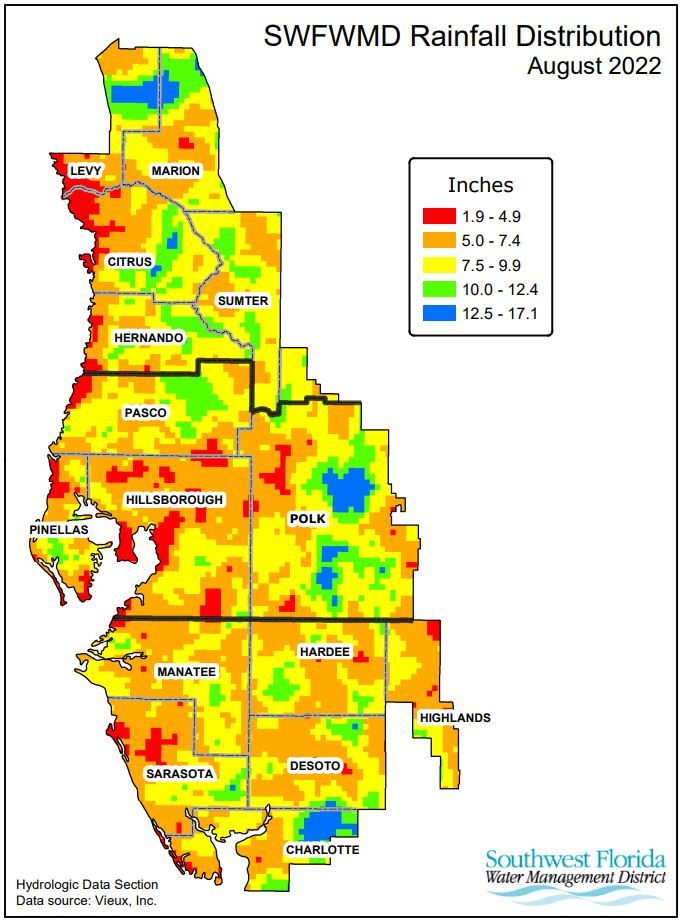
Withlacoochee River (from the Green Swamp downstream past Hwy 200):
- River levels and flows had declined for most of the month of August, until last week, when we received heavy rainfall throughout the watershed.
- In the past several days, water levels and flows have risen sharply along the entire Withlacoochee River.
- At Trilby (US 301), where the river’s banks are high, water levels rose over 3 feet in the past week.
- At Hwy 48, where the river is much wider and its banks are less constrictive, water levels have risen 6 inches since last week.
- While some areas in the Green Swamp have already peaked from last weeks rainfall, the rest of the river is either still rising or expected to rise from these recent rains.
- Additional rainfall in the coming days will continue to fill adjacent wetlands and creeks, adding more flow to the Withlacoochee River.
- From Trilby downstream to Hwy 200, river levels and flows remain much lower than they were a year ago, but that could change as our wet season continues.
- The table below compares current water levels and flows to what they were last month and last year.
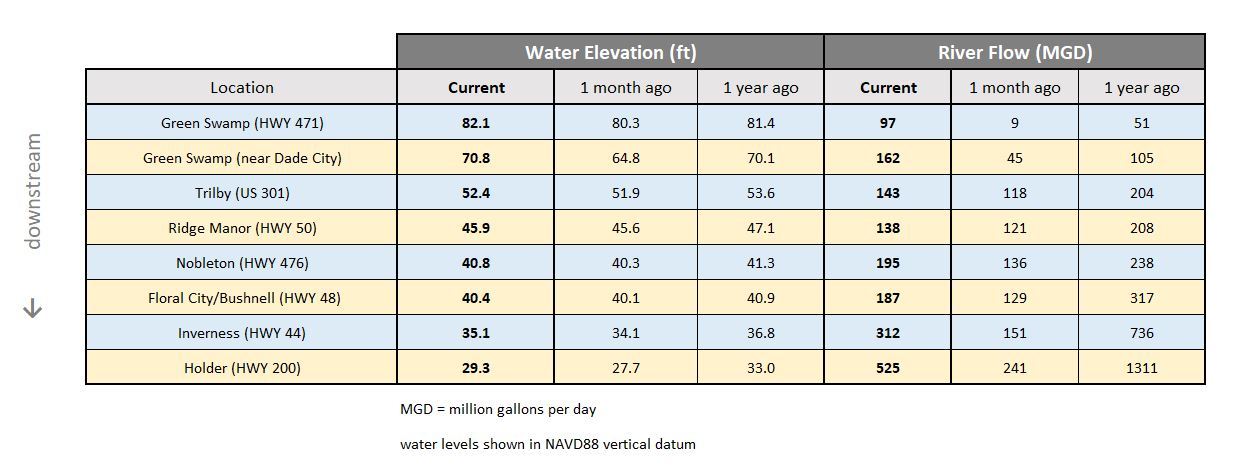
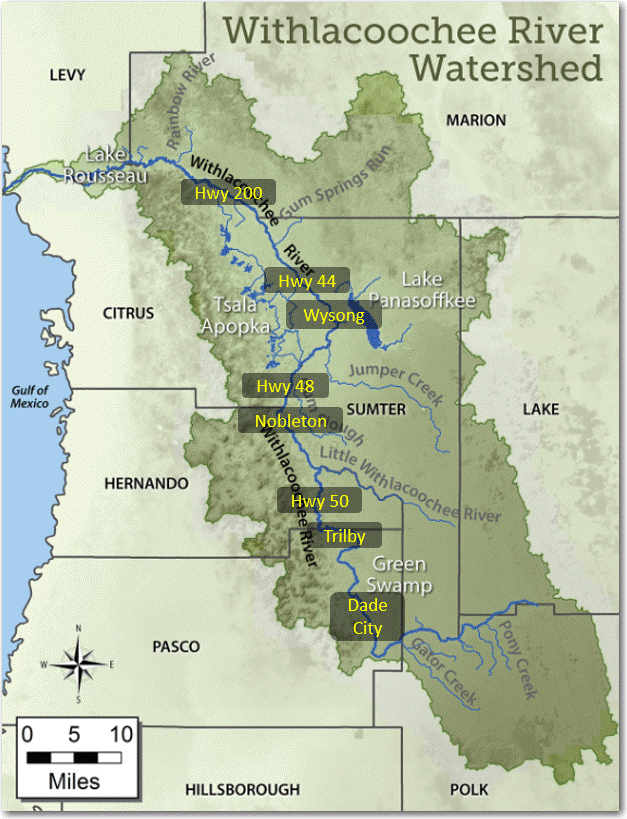
Withlacoochee River near Nobleton (August 2022)

Tsala Apopka Chain of Lakes:
- Water levels in the Tsala Apopka Lake Chain had been steady or dropping due to minimal rainfall during the first half of August.
- Heavy rainfall in recent days caused all three pools to rise 3 inches in the past week.
- The Hernando Pool, which has received more rainfall than the rest of the lake chain this summer, was already near its normal high level, so this additional rainfall prompted the opening of the S-353 structure for the past few days.
- As of today, the S-353 is now closed, helping to hold the Hernando Pool at its normal high (target) level.
- The Floral City and Inverness Pools are still a few inches below their target levels, so the remaining structures are currently closed.
- If additional rainfall causes water levels to rise too high this summer, structures may be opened to release some of this excess water.
- Lake levels typically peak in September (last month of the wet season) unless we experience a late-season tropical storm.
- Water levels in the lake chain are currently several inches lower than they were this time last year, when the area received record summer rainfall.

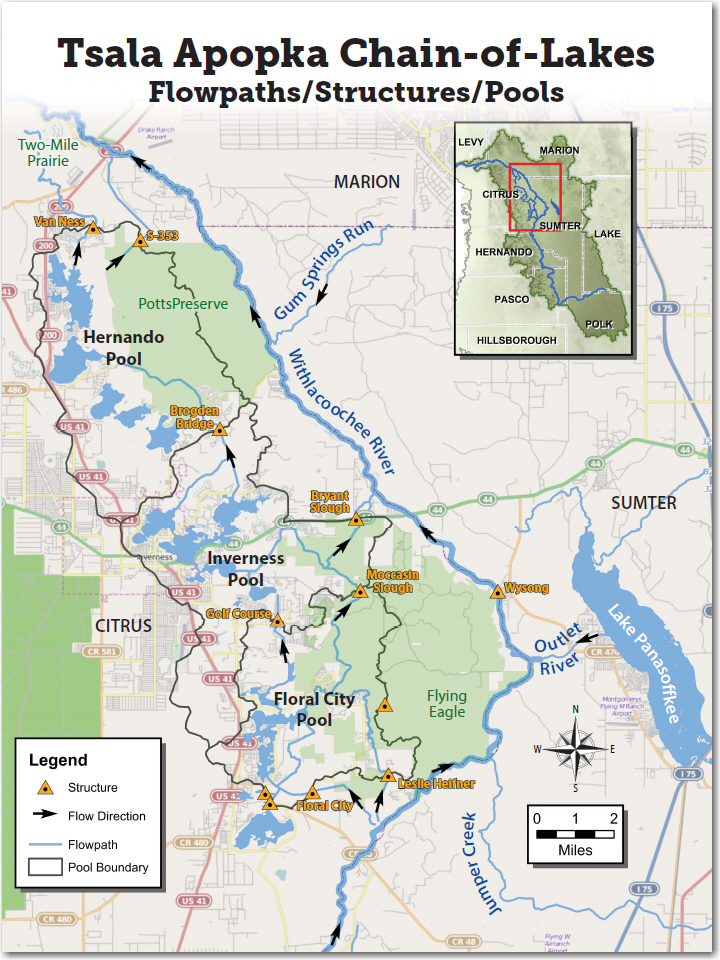
S-353 Structure discharging water from Hernando Pool (August 2022)

Lake Panasoffkee and Wysong:
- Lake Panasoffkee received over 6.5 inches of rain in the past week.
- This caused the lake level to rise 8 inches in recent days, after staying relatively level the first 3 weeks of August.
- Creek flows into the lake from Shady Brook and Little Jones Creek have doubled over the past week, due to heavy rainfall and increasing aquifer levels.
- Outflow from Lake Pan to the Withlacoochee River, also more than doubled since last week, since lake levels have risen faster than the Withlacoochee River has.
- Downstream on the Withlacoochee River, the main gate of the Wysong Structure remains fully raised, while the smaller, independent gate, is almost fully lowered.
- River flow at the Wysong Structure is 2.5 times greater than it was a week ago.
- Currently, Lake Panasoffkee is 5 inches lower than it was last September, due to less rainfall so far this summer.

Shady Brook flowing towards Lake Panasoffkee (August 2022)
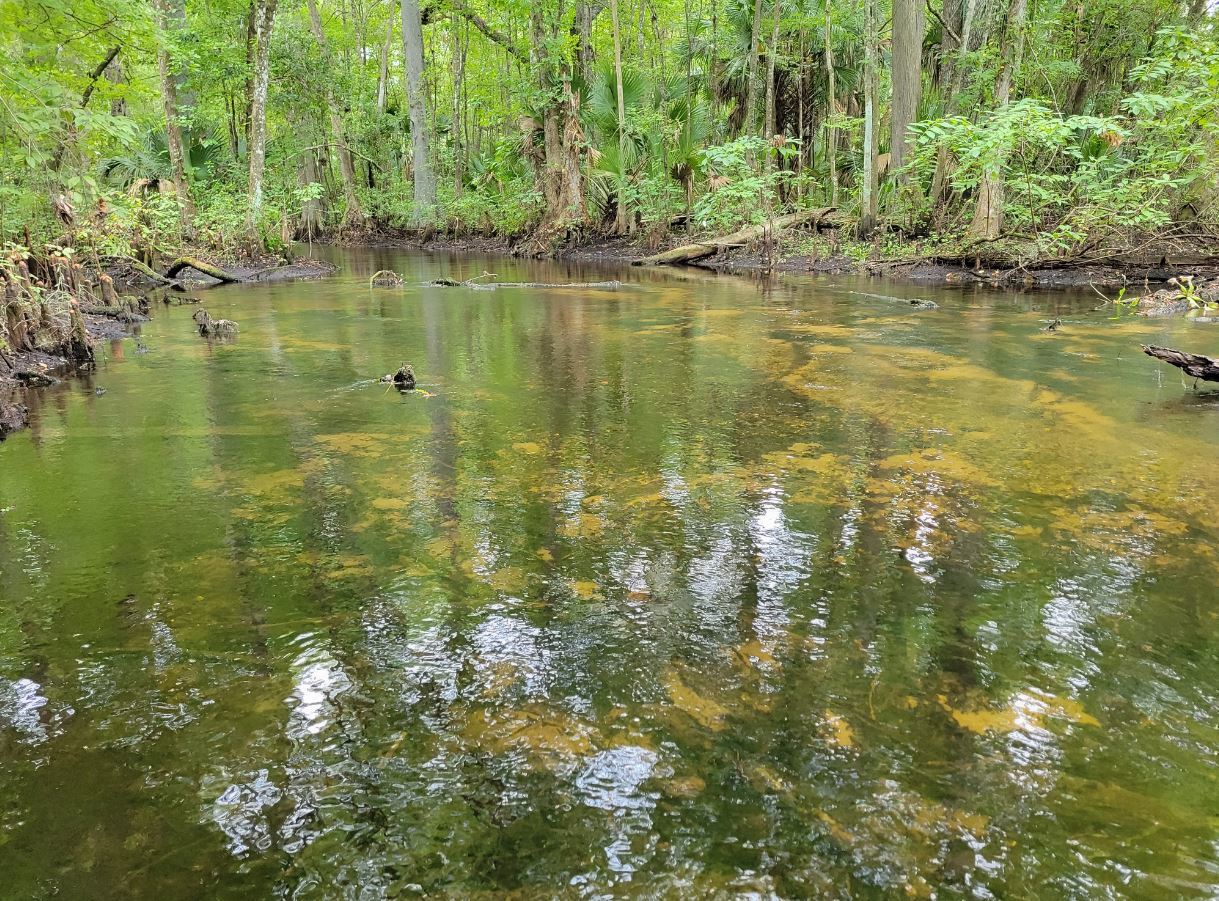
Lake Rousseau and the Lower Withlacoochee River (from Dunnellon to the Gulf of Mexico):
- Downstream from Dunnellon, the Withlacoochee River is influenced by water control structures on Lake Rousseau.
- Inflow to Lake Rousseau includes combined flows from the Withlacoochee and Rainbow Rivers.
- Withlacoochee River flow (which depends on rainfall and runoff from adjacent lands) more than doubled over the past month.
- Flow in the Rainbow River (which reflects changes in aquifer levels) remained relatively steady.
- At this time last year, heavy rainfall in the region had increased river flows dramatically, but so far this summer rainfall has been much lower.
- Inflows to Lake Rousseau are currently about half of what they were a year ago.
- The Rainbow River is contributing 45% of the total flow entering Lake Rousseau.

- The primary outlet from Lake Rousseau is through the Inglis Bypass Spillway to the Lower Withlacoochee River (see maps below).
- All water exiting Lake Rousseau is currently passing through the Inglis Bypass Spillway.
- This structure is currently flowing at nearly 100% of its capacity, meaning any increased inflows will exit through the Inglis Main Dam.
- The Inglis Main Dam (which connects to the Barge Canal) was open for a few days this week but is currently closed again.
- If flows entering Lake Rousseau increase again, the Inglis Dam will be re-opened to divert the excess water.
- Almost two-thirds less flow is exiting Lake Rousseau, compared to last year when the area received much more summer rainfall.

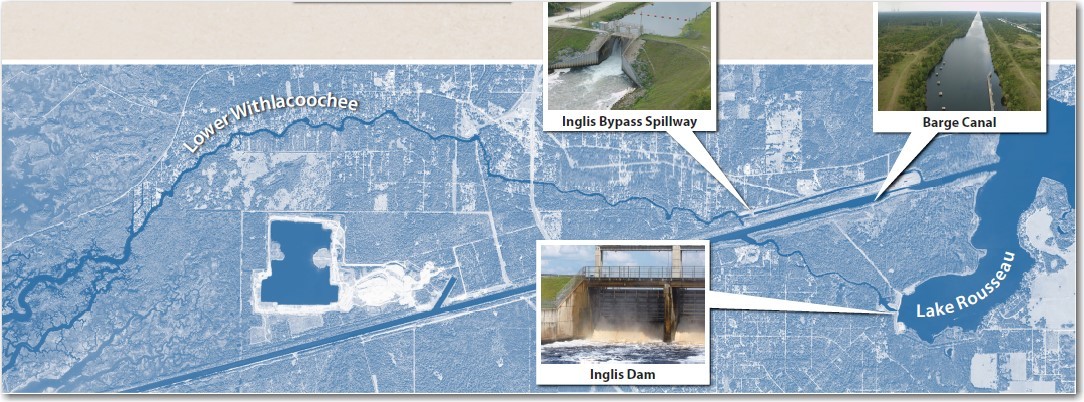
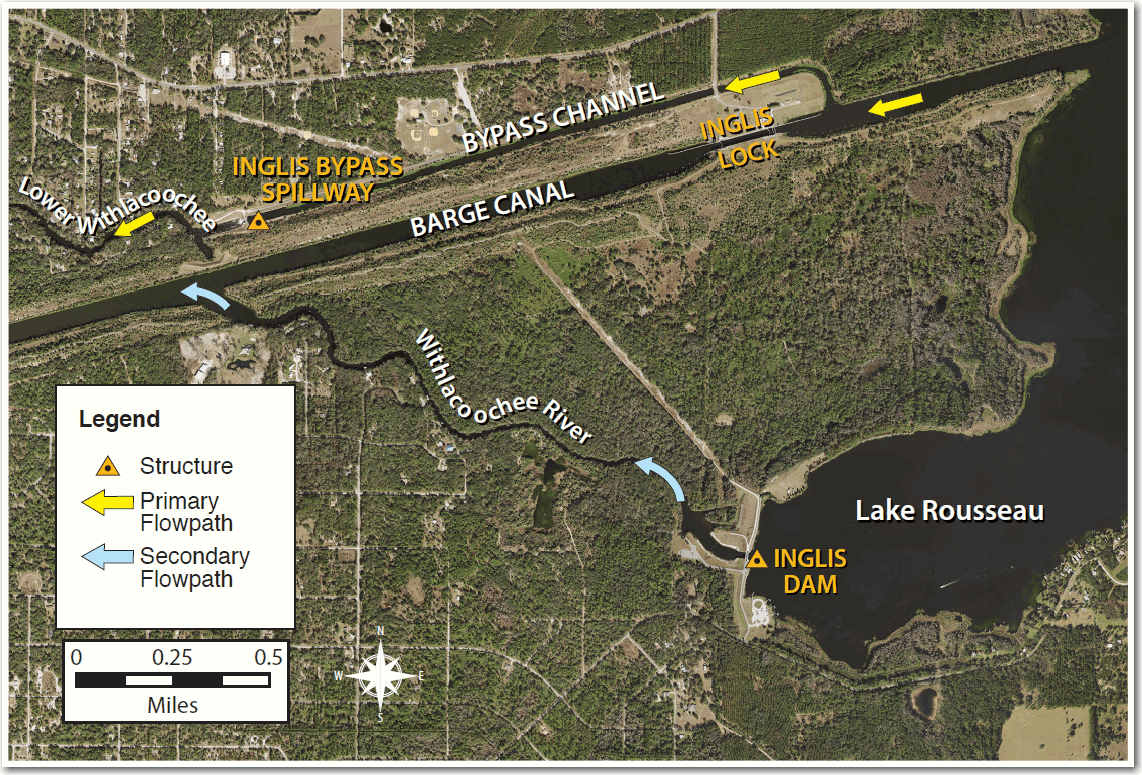
Best regards,
Mark
Mark Fulkerson, Ph.D., P.E.
Chief Professional Engineer
Water Resources Bureau
Southwest Florida Water Management District
(352) 269-6073 (office)
(352) 279-4493 (cell)

